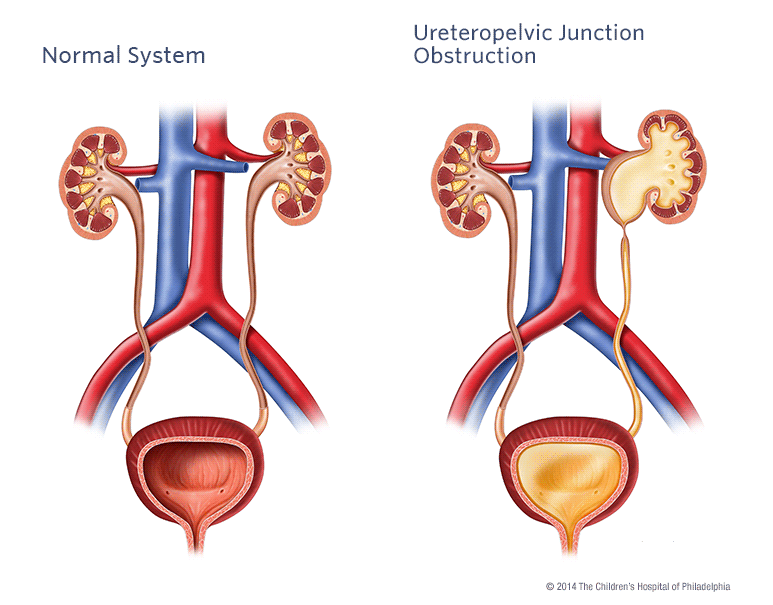- Etiology
- Congenital

- Intrinsic: malformation of the smooth muscle of a ureteral segment and consecutive impairment of peristalsis (functional stenosis)
- Extrinsic: aberrant renal pole artery causing proximal ureteral obstruction
- Acquired: factors causing ureteral obstruction
- Clinical features
- Newborns and infants
- Palpable upper abdominal mass
- Failure to thrive
- Recurrent pyelonephritis
- Children and adults
- Flank pain or upper abdominal pain that may be triggered or worsened during states of increased diuresis (e.g., after caffeine or alcohol consumption).
- Nausea/vomiting
- Recurrent pyelonephritis
- Hematuria
- Diagnostics
- Ultrasound
- In industrialized countries, most cases of congenital ureteropelvic junction obstruction are diagnosed antenatally with hydronephrosis on prenatal ultrasound.
- IV urography
- Treatment
- Observation: asymptomatic, mild cases
- Surgery
- Symptomatic patients or those with > 40% loss of renal function
